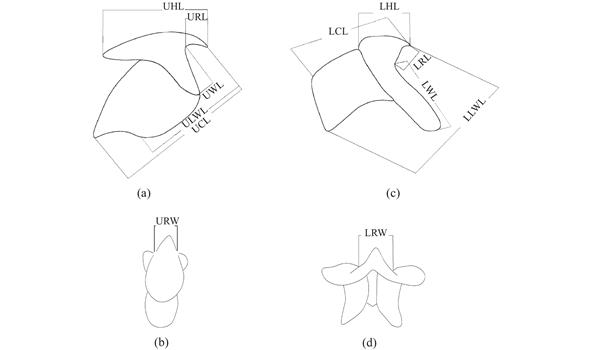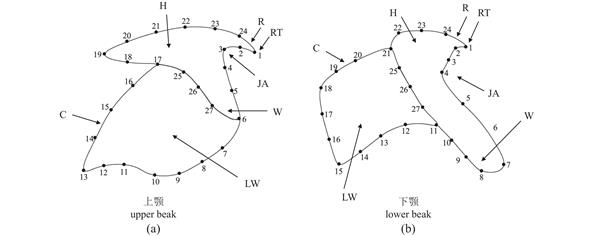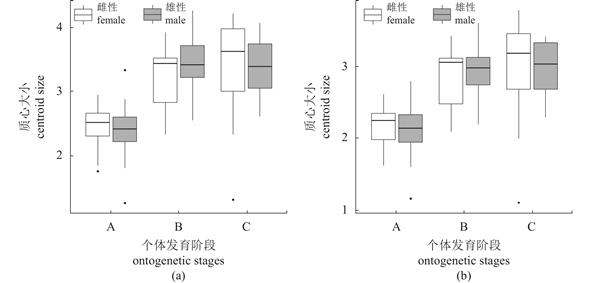| 山东省金乌贼增殖放流现状与资源养护对策 |
| |
| 引用本文: | 黎婷婷, 周敏华, 王超, 方舟. 个体发育对黄海南部金乌贼角质颚形态的影响[J]. 水产学报, 2023, 47(8): 089306. DOI: 10.11964/jfc.20220913715 |
| |
| 作者姓名: | 黎婷婷 周敏华 王超 方舟 |
| |
| 作者单位: | 1.上海海洋大学海洋科学学院,上海 201306;2.上海海洋大学,大洋渔业资源可持续开发教育部重点实验室,上海 201306;3.上海海洋大学,国家远洋渔业工程技术研究中心,上海 201306;4.上海海洋大学,农业农村部大洋渔业开发重点实验室,上海 201306;5.上海海洋大学,农业农村部大洋渔业资源环境科学观测实验站,上海 201306 |
| |
| 基金项目: | 国家重点研发计划(2019YFD0901404);国家自然科学基金(NSFC41876141);上海市科技创新行动计划(19DZ1207502);农业农村部外海渔业开发重点实验室开放课题(LOF 2018-02) |
| |
| 摘 要: | 
为了探究个体发育和食性对金乌贼角质颚形态的影响。实验采用几何形态测量学地标点法对2018年11月—2019年3月在黄海南部采集的金乌贼角质颚进行形态分析,共对138对金乌贼的上、下颚分别定义了27个地标点进行分析。结果显示,①不同发育阶段的金乌贼上、下颚的大小、形态及异速生长模式均存在显著差异,并且不同性别的上颚形态存在显著差异。②未成熟期的金乌贼角质颚的喙部较弯曲和尖锐,亚成熟期的角质颚头盖和翼部变宽,喙部也较尖锐,而成熟期的角质颚喙部短钝,侧壁较尖长,下颚翼部宽大。
研究表明,不同发育阶段角质颚的发育机制可能是为更好地适应摄食对象变更,满足摄食需求做出的响应。这些与个体生长发育和摄食习性相关的表型可塑性反映了金乌贼角质颚的生长规律和金乌贼对食物资源的适应性利用。本研究通过分析金乌贼角质颚形态的生长变化,完善了金乌贼的基础生物学信息,为金乌贼资源的合理利用提供一定的科学依据。

|
| 关 键 词: | 金乌贼 角质颚 形态变化 个体发育 几何形态测量学 黄海南部 |
| 收稿时间: | 2022-09-27 |
| 修稿时间: | 2023-02-14 |
|
| 点击此处可从《水产学报》浏览原始摘要信息 |
|
点击此处可从《水产学报》下载免费的PDF全文 |
|



